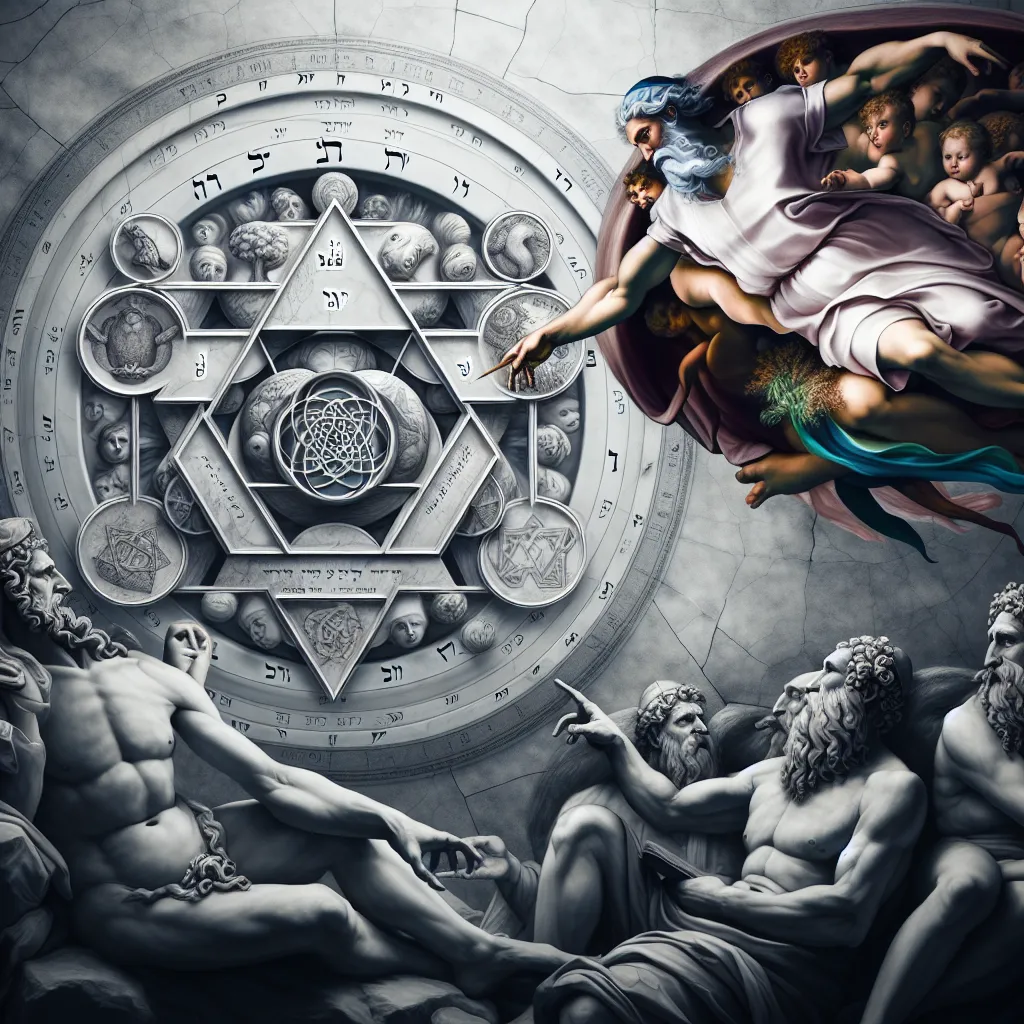
- Published on
- Authors

- Name
- You
The Origins of Kabbalah: Tracing the Roots of Jewish Mysticism
The word "Kabbalah" is derived from the Hebrew "kabel," meaning "to receive." It signifies the body of esoteric knowledge that has been gradually received and passed down through generations. But what are the roots of this profound mystical tradition, and how does it align with modern scientific insights?
Historical Backdrop
1. Ancient Beginnings
Kabbalah's roots can be traced back to the times of the Hebrew Bible (Tanakh). Although not explicitly mentioned, early Kabbalistic ideas are implied in the mystic visions of the prophets and other sacred texts. By the 1st century BCE, Jewish mystics were already exploring esoteric interpretations of scriptural passages, focusing on divine mysteries, the nature of the universe, and the metaphysical realm.
2. The Formative Texts: Sefer Yetzirah and Zohar
Two pivotal works significantly shaped the Kabbalistic tradition:
Sefer Yetzirah ("Book of Creation"):
- Estimated Date: Between the 3rd and 6th century CE.
- Content: Explores the creation of the universe, the dynamic interplay between the 10 sefirot (divine attributes), and the 22 letters of the Hebrew alphabet, integrating mystical numerology.
Zohar ("Book of Splendor"):
- Author: Traditionally attributed to Rabbi Shimon bar Yochai from the 2nd century CE, but likely compiled in the 13th century by Moses de León.
- Content: This extensive commentary on the Torah delves into mystical interpretations of the scriptures, elaborating the nature of God and the structure of the cosmos.
| Text | Estimated Date | Key Concepts |
|---|---|---|
| Sefer Yetzirah | 3rd - 6th century CE | Sefirot, Hebrew letters, Creation |
| Zohar | Compiled in the 13th century | Divine mysteries, interpretation of Torah |
Scientific Parallels
1. Quantum Mysticism
Modern physics, particularly quantum mechanics, echoes some Kabbalistic principles. The dual wave-particle nature of matter and the role of the observer in shaping reality shares resonances with Kabbalistic ideas of divine energy manifesting through sefirot and human consciousness affecting the material world.
2. Fractals and Divine Structure
The intricate, self-repeating patterns of fractals in mathematics and nature mirror the Kabbalistic Tree of Life. This sacred diagram is composed of interconnected nodes (sefirot), symbolizing the fractal-like, recursive nature of divine creation.
The Kabbalistic Tree of Life - a fractal-like, recursive structure of divine creation
Evolution into Modern Practice
1. The Lurianic Renaissance
Rabbi Isaac Luria (16th century) revolutionized Kabbalah with doctrines like tsimtsum (divine contraction) and shevirat ha-kelim (shattering of the vessels). His teachings emphasized individual redemption and collective cosmic restoration, aligning personal spiritual practices with universal harmony.
2. 20th Century and Beyond
Hebrew mysticism has expanded beyond strictly Jewish communities, influencing a diverse array of spiritual practices globally. The integration with psychology, literature, and even advanced scientific theories highlights Kabbalah's continued relevance.
Conclusion: Bridging Science and Mysticism
Kabbalah serves as a bridge connecting the esoteric traditions of ancient Jewish mysticism with contemporary scientific thought. By exploring the parallels between these seemingly disparate fields, we can cultivate a deeper, more holistic understanding of both our spiritual and material existence.
Explore more about Kabbalah and its fascinating journey through history and science in the following resources:
- Gershom Scholem's "Major Trends in Jewish Mysticism"
- Moshe Idel's "Kabbalah: New Perspectives"
Remember, the journey of understanding Kabbalah is endless, for it mirrors the infinite nature of the cosmos itself.
